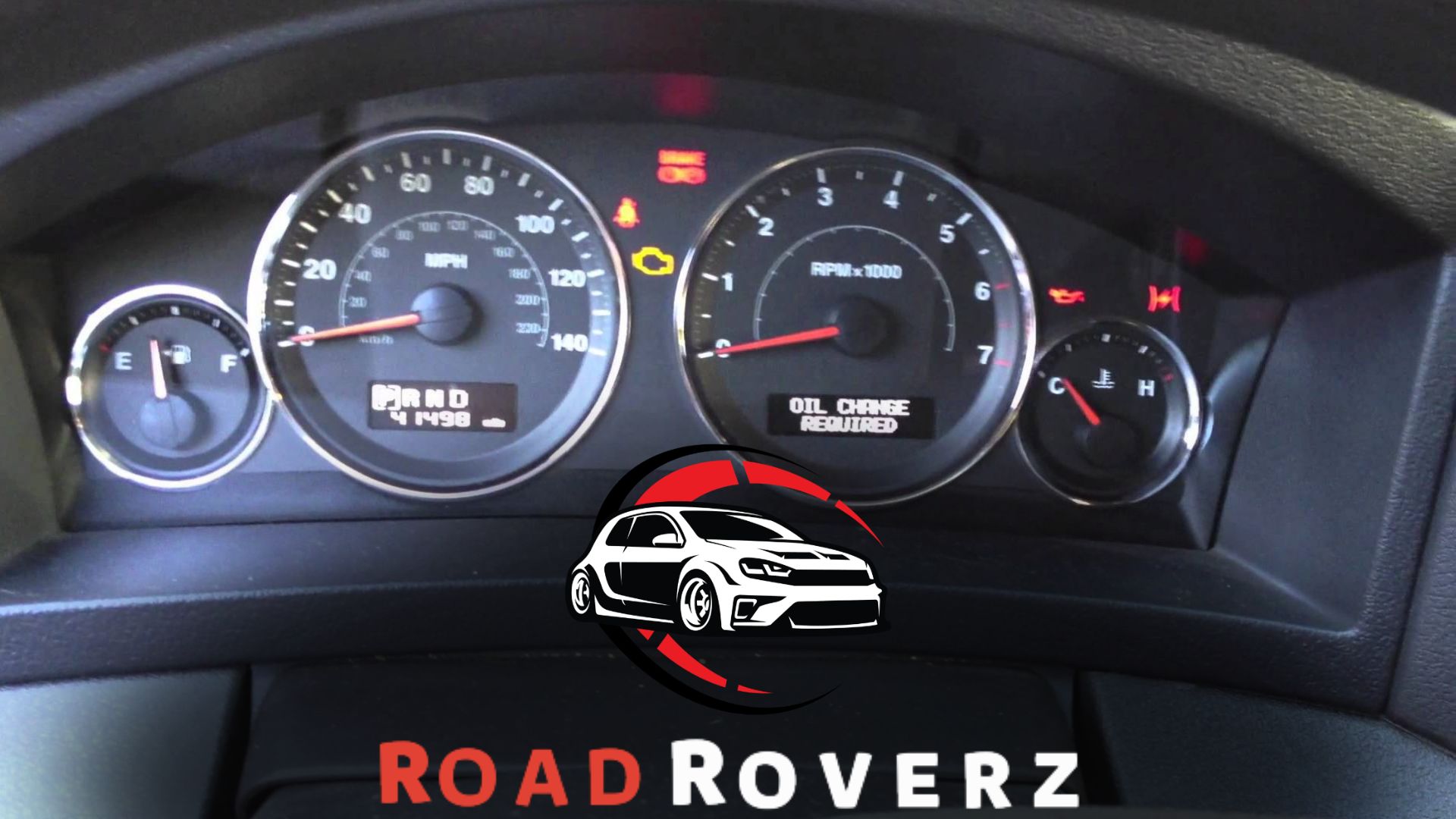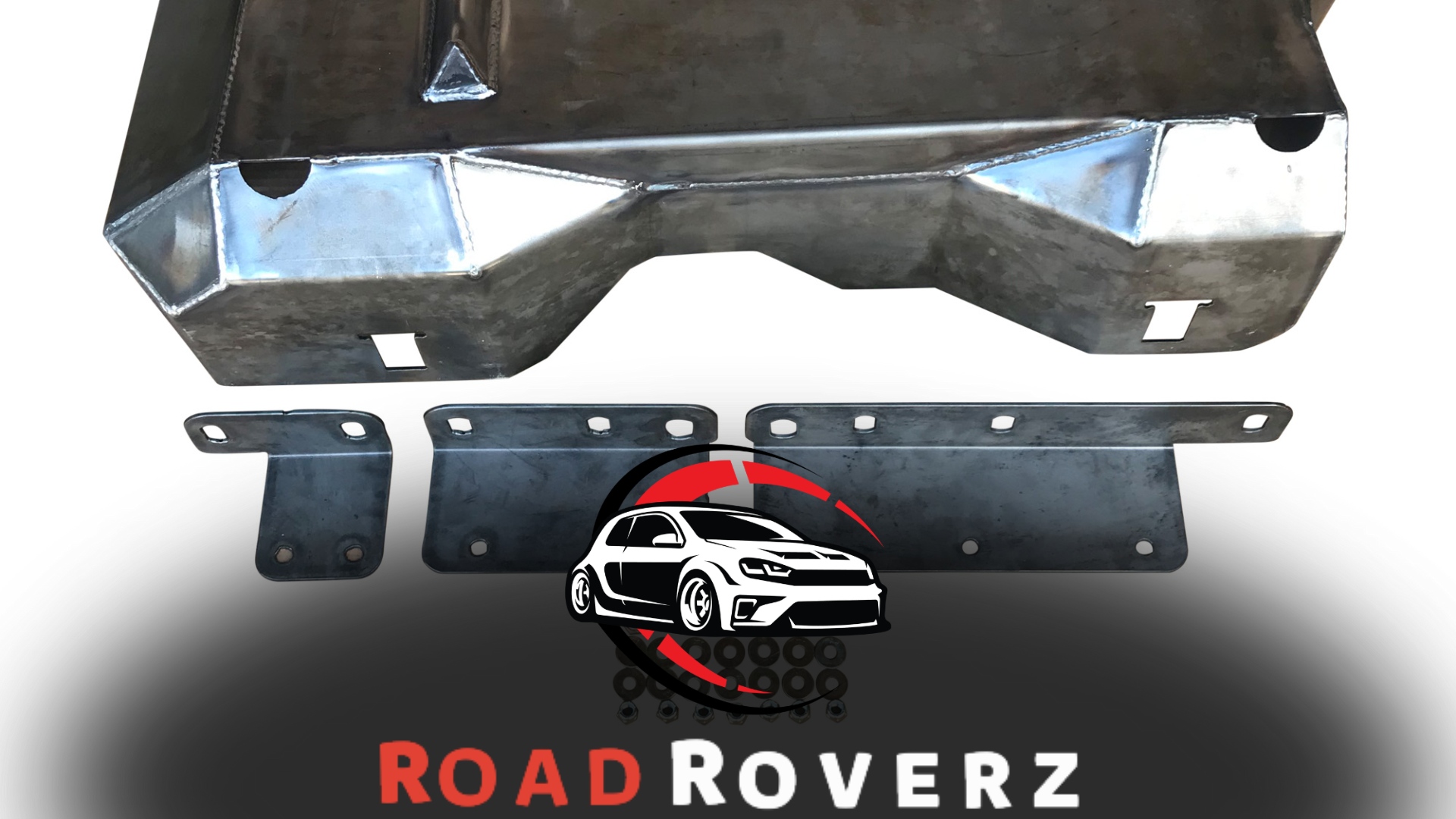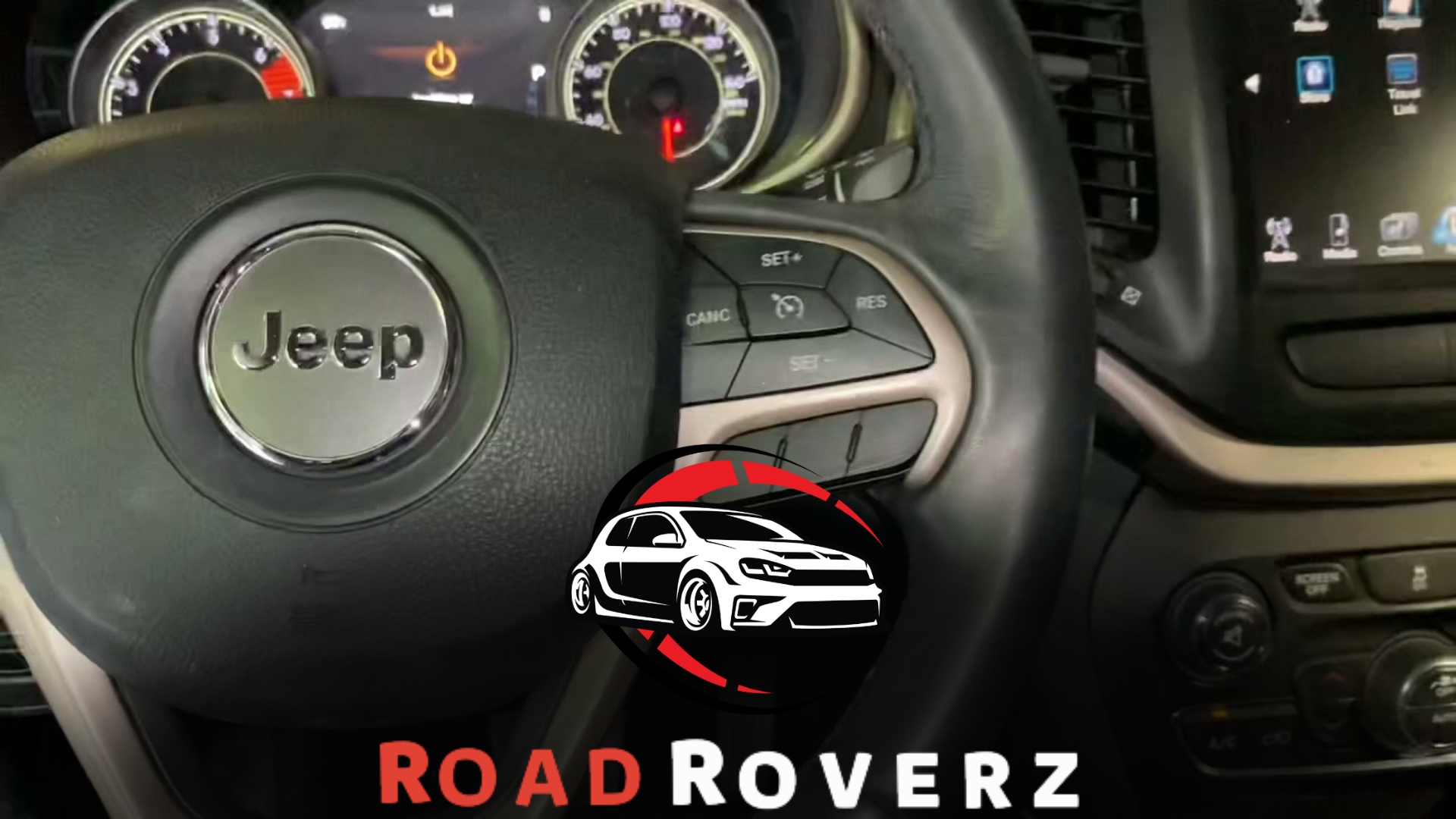The coolant temperature sensor on a Jeep 3.6 can be found located near the thermostat housing. It is responsible for monitoring the temperature of the coolant in the engine.
To locate it, look for a small sensor with an electrical connector attached to it near the thermostat housing. The coolant temperature sensor plays a crucial role in the engine’s operation as it provides essential information to the engine control unit (ECU) for proper fuel injection and ignition timing.
By accurately measuring the coolant temperature, the sensor helps prevent overheating and ensures optimal engine performance.
Regularly checking and replacing a faulty coolant temperature sensor can help prevent potential engine damage and maintain the overall health of your Jeep 3.6.
What is a Coolant Temp Sensor?

The coolant temp sensor in a Jeep 3.6 is responsible for monitoring the temperature of the coolant in the engine. It is located in various engine parts, such as near the thermostat housing or on the cylinder head.
Jeep 3.6 Coolant Temp Sensor Location
The coolant temp sensor in your Jeep 3.6 is a crucial component responsible for monitoring the temperature of the engine coolant. It plays a vital role in ensuring your vehicle operates smoothly and prevents engine damage from overheating.
Understanding the coolant temp sensor and its significance is essential for maintaining the optimal performance of your Jeep.
Definition and Purpose of a Coolant Temp Sensor
A coolant temp sensor, also known as an engine coolant temperature sensor (ECT sensor), is a device that measures the temperature of the engine coolant.
It provides valuable information to the engine control unit (ECU) to effectively manage the engine’s fuel-air mixture and ignition timing.
The coolant temperature sensor ensures the engine operates within the recommended temperature range by constantly monitoring the coolant temperature. Here is a breakdown of the definition and purpose of a coolant temp sensor:
- The coolant temp sensor alerts the ECU about temperature changes, enabling it to adjust fuel injection and ignition timing to maintain optimum engine performance.
- It helps prevent engine overheating by triggering cooling fans or reducing engine load when necessary.
- The coolant temperature sensor ensures the accuracy of the temperature gauge on your dashboard, allowing you to monitor the engine’s operating temperature.
The coolant temp sensor in your Jeep 3.6 is a vital component that helps regulate the engine’s temperature. Providing accurate temperature readings to the ECU ensures proper engine functioning and prevents potential damage or overheating.
Understanding the coolant temp sensor and its location is crucial for troubleshooting any cooling system issues in your Jeep.
Importance of the Coolant Temp Sensor in a Jeep 3.6
The location of the coolant temp sensor in a Jeep 3.6 is crucial for monitoring the engine’s temperature, preventing overheating, and ensuring optimal performance.
The coolant temp sensor monitors the engine’s temperature in a Jeep 3.6. This little component might seem insignificant, but it plays a significant part in ensuring optimal performance and longevity of your vehicle.
Let’s dive into how the sensor affects the performance of a Jeep 3.6.
How the Sensor Affects the Performance of a Jeep 3.6
- Safeguarding engine temperature: The coolant temp sensor continuously monitors the engine’s temperature, ensuring it remains within the ideal range. By checking the temperature, the sensor helps prevent overheating, which can lead to engine damage or failure.
- Optimizing fuel efficiency: Maintaining the proper engine temperature is crucial for the engine’s health and efficiency. The coolant temp sensor provides vital information to the engine control unit (ECU), which adjusts fuel delivery and ignition timing based on the engine temperature. This optimization helps in achieving the best possible fuel economy.
- Ensuring proper cold start operation: During cold starts, the coolant temp sensor assists the ECU in providing the right fuel to the engine. The sensor relays accurate temperature data to the ECU, allowing it to adjust the fuel mixture for a smooth and efficient start, reducing engine wear and emissions.
- Preventing engine damage: Modern engines operate under various conditions, including extreme heat and cold. The coolant temperature sensor is a guardian, ensuring the engine does not encounter dangerous temperature levels. By alerting the driver or the ECU about any temperature fluctuations, the sensor helps prevent potential engine damage.
- Enabling efficient radiator fan operation: The radiator fan is critical in cooling the engine. The coolant temperature sensor provides valuable input regarding the engine temperature, allowing the ECU to control the fan activation. The sensor ensures proper cooling by triggering the fan when necessary, preventing engine overheating.
- Facilitating accurate temperature gauge readings: The coolant temp sensor influences the accuracy of the temperature gauge in the Jeep 3.6. By providing real-time temperature data, the sensor ensures that the indicator displays the engine’s actual temperature, enabling the driver to monitor the engine’s health and take appropriate actions if needed.
The coolant temp sensor may be small, but its importance in the overall performance and well-being of a Jeep 3.6 should not be underestimated.
From safeguarding the engine from overheating to optimizing fuel efficiency, this sensor plays a vital role in maintaining the optimal temperature and ensuring the vehicle’s smooth operation.
Coolant Temp Sensor Placement in the Jeep 3.6
The coolant temp sensor placement in the Jeep 3.6 can be found at a specific location to ensure accurate temperature readings for optimal engine performance. Discover where the Jeep 3.6 coolant temp sensor is placed to ensure proper functionality.
Where To Find the Coolant Temp Sensor in the Engine
The coolant temperature sensor plays a crucial role in monitoring the temperature of the coolant in the Jeep 3.6 engine. If you’re wondering where to locate this sensor, you’ve come to the right place.
Below are the details of the coolant temp sensor’s placement in the Jeep 3.6 engine.
- The coolant temperature sensor in the Jeep 3.6 is typically situated near the engine.
- You can usually find the coolant temperature sensor on the engine block or cylinder head.
- It is commonly positioned near the thermostat housing or the radiator inlet/outlet.
- It is important to note that the exact placement may vary depending on the specific model and year of your Jeep 3.6 vehicle.
- The coolant temperature sensor should be positioned directly with the coolant flow to ensure precise readings.
Now that you know where to find the coolant temp sensor, it’s time to understand the factors that influence its location.
Factors Influencing Sensor Location
Various factors come into play when determining the placement of the coolant temp sensor in the Jeep 3.6 engine. Here are some of the critical factors to consider:
- Engine design: The layout and design of the engine can influence the placement of the coolant temp sensor. Manufacturers strategically position it to ensure accurate temperature readings for optimal engine performance.
- Coolant flow: The sensor should be placed where it can directly contact the coolant flow. This ensures it receives accurate data about the coolant temperature, enabling the engine control unit (ECU) to make appropriate adjustments.
- Accessibility: Placement of the coolant temp sensor should be convenient for inspection, maintenance, and replacement purposes. It should be easily accessible for mechanics to carry out any necessary servicing.
- Heat sources: The location of heat sources, such as the exhaust manifold, cylinder head, or radiator, can impact the sensor’s placement. Positioning the coolant temp sensor near these components helps efficiently monitor temperature fluctuations.
By considering these factors, automakers determine the optimal position for the coolant temp sensor, enabling proper temperature monitoring and engine performance.
Understanding the location and factors influencing the coolant temp sensor placement is essential for troubleshooting and maintaining the Jeep 3.6 engine.
Steps to Locate the Coolant Temp Sensor
Locating the coolant temp sensor in a Jeep 3.6 requires simple steps. By referring to a reliable guide, carefully inspect the engine compartment to find the sensor’s specific location, helping to ensure the proper functioning of your Jeep’s cooling system.
If you’re having issues with your Jeep’s coolant temperature, it might be time to locate and check the coolant temp sensor. This sensor plays a vital role in monitoring the engine’s temperature and ensuring it operates optimally.
To help you find the coolant temp sensor, here is a step-by-step guide:
Step 1: Gather the Necessary Tools
Before you begin, make sure you have the following tools ready:
- Socket set
- Pliers
- Flashlight
- Safety glasses
- Gloves
Step 2: Locate the Coolant Temp Sensor Housing
The coolant temperature sensor is typically located near the thermostat housing. To find it, follow these steps:
- Open the hood of your Jeep and secure it in the upright position.
- Inspect the engine bay, looking for the thermostat housing. It is usually located near the engine block and has coolant hoses connected to it.
- Once you find the thermostat housing, check for any wires or connectors attached to it.
Step 3: Remove Any Obstructions
Now that you’ve located the thermostat housing and any associated wires or connectors, it’s time to remove any obstructions in your way:
- Carefully disconnect any electrical connectors connected to the coolant temp sensor housing. Remember to handle the connectors gently to prevent damage.
- If any coolant hoses obstruct your access to the coolant temp sensor, use your pliers to loosen the hose clamps and disconnect the hoses from the housing.
Step 4: Remove the Coolant Temp Sensor
Once you have cleared the area around the coolant temp sensor housing, you can proceed to remove the sensor itself:
- Use the appropriate socket from your set to loosen and remove the bolts securing the coolant temp sensor housing.
- Gently pull out the coolant temp sensor from the housing. Be cautious not to damage the sensor or its connectors during this process.
- Inspect the sensor for any signs of damage, such as corrosion or wear. If necessary, replace the sensor with a new one.
Step 5: Install the New Coolant Temp Sensor
After removing the old sensor, it’s time to install the new one:
- Insert the new coolant temp sensor into the housing, ensuring it is securely seated.
- Use the socket set to tighten the bolts and secure the coolant temp sensor housing.
- Reconnect any electrical connectors that were previously disconnected.
- Reattach any coolant hoses removed earlier, ensuring the clamps are correctly tightened.
By following these steps, you should be able to locate the coolant temp sensor in your Jeep and perform any necessary maintenance or replacement.
Remember to take safety precautions while working with your vehicle’s engine and consult your owner’s manual for specific instructions.
Signs of a Faulty Coolant Temp Sensor
The Jeep 3.6 coolant temp sensor location can be the culprit when experiencing erratic temperature readings, engine overheating, or poor fuel efficiency.
It is vital to promptly identify and fix issues with the coolant temp sensor to prevent further damage to the engine.
The coolant temperature sensor is an essential component of your Jeep’s engine, as it helps monitor the temperature of the coolant. A faulty sensor can lead to various problems, affecting the overall performance of your vehicle.
Here are some common symptoms that indicate issues with the coolant temperature sensor:
- Inaccurate temperature readings: A faulty sensor may provide incorrect coolant temperature readings, causing the engine to overheat or run too cool. This can result in poor fuel efficiency and potential engine damage.
- Engine misfires or stalling: When the coolant temperature sensor fails, it can send incorrect data to the engine control unit (ECU), which may result in engine misfires or stalling. This can be dangerous, especially while driving at high speeds.
- Erratic or fluctuating temperature gauge: If the temperature gauge on your Jeep’s dashboard shows inconsistent readings, it could be due to a malfunctioning sensor. You may observe sudden jumps or drops in the temperature gauge, indicating a faulty coolant temperature sensor.
- Difficulty starting the engine: A faulty coolant temperature sensor can cause problems during engine start-up. If the engine takes longer, struggles to start, or requires multiple attempts, it could be due to a malfunctioning sensor.
- Poor fuel efficiency: Erroneous temperature readings from a faulty coolant temperature sensor can lead to poor fuel efficiency. The ECU may not deliver the optimal fuel-to-air ratio based on inaccurate temperature data.
Diagnosing the Problem Using the Sensor
You can perform a simple test using the sensor to diagnose issues with the coolant temperature sensor. Here’s how:
- Access the coolant temperature sensor: Locate the sensor in your Jeep’s engine bay. The exact location may vary depending on the model, but it is typically positioned near the thermostat housing or the intake manifold.
- Disconnect the electrical connector: Unplug the electrical connector from the coolant temperature sensor.
- Measure resistance: With a digital multimeter set to the resistance mode, connect the meter leads to the two terminals of the sensor. Compare the reading obtained with the specifications provided by the manufacturer. The sensor may be faulty if the resistance is outside the recommended range.
- Inspect for physical damage: Examine the coolant temperature sensor for any visible physical harm, such as corrosion or loose connections. If you notice any issues, it is advisable to replace the sensor.
By examining the signs mentioned above and conducting a simple diagnostic test, you can determine if your Jeep’s coolant temperature sensor is faulty.
Addressing any sensor issues promptly can help maintain your vehicle’s performance, fuel efficiency, and overall reliability.
Replacing the Coolant Temp Sensor in a Jeep 3.6
The Jeep 3.6 coolant temp sensor is located in a vital spot for efficient engine temperature management. Replacing the sensor helps ensure optimal performance and prevent potential overheating issues.
Step-By-Step Instructions for Sensor Replacement
Regular maintenance is essential to keep your Jeep 3.6 running smoothly. One crucial task is replacing the coolant temperature sensor. Here’s a step-by-step guide to help you through the process:
- Gather the necessary tools and materials: You’ll need a socket wrench, a replacement coolant temperature sensor, a drain pan, and a new coolant.
- Locate the sensor: The coolant temperature sensor is typically near the thermostat housing or cylinder head. Consult your Jeep’s manual or online resources for the exact location.
- Prepare the area: Before beginning, ensure the engine is excellent. Place the drain pan under the radiator drain plug to catch any coolant that may spill.
- Drain the coolant: Locate the radiator drain plug, usually at the bottom. Loosen the plug and allow the coolant to drain into the pan. Once drained, securely tighten the plug.
- Disconnect the electrical connector: Remove the bolt securing the electrical connector to the coolant temperature sensor using a socket wrench. Carefully disconnect the connector.
- Remove the sensor: Using the appropriate socket size, unscrew the sensor from its housing. Be cautious not to damage the threads during removal.
- Install the new sensor: Apply a small amount of thread sealant to the new sensor’s threads to prevent leaks. Carefully screw the new sensor into the housing by hand, ensuring it is secure.
- Reconnect the electrical connector: Attach the electrical connector to the new sensor and secure it with the previously removed bolt. Double-check that it is tightly fastened.
- Refill with coolant: Fill the radiator with the appropriate coolant mixture following your Jeep’s specifications. Be sure to dispose of any old coolant properly.
- Test for leaks and functionality: Start your Jeep and allow it to reach operating temperature. Inspect for any coolant leaks around the sensor. Additionally, monitor the coolant temperature gauge to ensure it is functioning correctly.
Tips and Precautions for a Successful Replacement
When replacing the coolant temperature sensor in your Jeep 3.6, keeping a few things in mind is essential. Here are some tips and precautions to ensure a successful replacement:
- Always consult your Jeep’s manual or reputable online resources for instructions and details concerning your particular model.
- Work on the sensor when the engine is excellent to avoid burns from hot coolant.
- Handle the new sensor carefully to prevent damage to the threads and ensure a proper fit.
- Apply a small amount of thread sealant to the new sensor’s threads to prevent leaks.
- Keep a drain pan handy to collect any spilled coolant during the replacement process.
- Dispose of used coolant responsibly, following local regulations and guidelines.
- Double-check the connectors for a secure and tight fit to prevent electrical issues.
- Monitor the coolant temperature gauge after installation to ensure accurate readings.
- If you encounter any difficulties or are unsure of the process, it’s best to consult a qualified mechanic for assistance.
Following these step-by-step instructions and keeping these tips in mind, you can successfully replace the coolant temperature sensor in your Jeep 3.6, ensuring optimal performance and reliability.
Maintaining the Coolant Temp Sensor
The Jeep 3.6 coolant temp sensor location is essential to maintain the vehicle’s performance. Ensure regular maintenance of the sensor to prevent overheating and potential engine damage.
Best Practices for Sensor Upkeep
Regular maintenance of the coolant temp sensor in your Jeep 3.6 ensures optimal engine performance and prevents potential issues down the line. Here are some best practices to follow for sensor upkeep:
- Inspect for physical damage: Regularly check the sensor housing for any signs of damage, such as cracks or corrosion. Damaged sensors can provide inaccurate readings and affect engine performance.
- Clean the sensor: Over time, the coolant temp sensor can accumulate dirt, oil, or other debris. Use a clean, lint-free cloth or brush to gently clean the sensor and surrounding area. Avoid using abrasive materials that can damage the sensor.
- Check wiring connections: Ensure that the wiring connections to the sensor are secure and free from corrosion. Loose or corroded connections can lead to faulty temperature readings. If needed, carefully reconnect or clean the connections.
- Monitor coolant levels: Proper cooling is essential for accurate temperature readings. Regularly check the coolant levels in your Jeep’s reservoir and top up as necessary. Low coolant levels can impact the sensor’s effectiveness.
- Use quality coolant: Ensure that the coolant used in your Jeep is high quality and compatible with your vehicle’s specifications. Poor-quality coolant can cause sensor malfunction and lead to engine overheating.
- Follow manufacturer guidelines: Always refer to the manufacturer’s guidelines for the recommended maintenance intervals and procedures. Different Jeep models may have specific instructions for coolant temp sensor upkeep.
- Address sensor issues promptly: If you notice any unusual temperature readings, engine performance issues, or warning lights related to the coolant temp sensor, have it inspected by a qualified mechanic. Promptly addressing sensor issues can prevent further damage to your Jeep’s engine.
Importance of Regular Maintenance
Regular maintenance of the coolant temp sensor is crucial for several reasons:
- Accurate temperature readings: The coolant temperature sensor plays a vital role in monitoring the engine’s temperature. Maintaining the sensor ensures accurate readings, allowing you to identify and address any potential overheating issues promptly.
- Engine performance optimization: A properly functioning coolant temp sensor helps optimize engine performance. It ensures that the engine operates within the recommended temperature range, maximizing fuel efficiency and reducing the risk of engine damage.
- Preventive measures against engine damage: By monitoring coolant temperature, the sensor helps prevent engine damage due to overheating. Regular maintenance ensures the sensor remains in good condition and can detect any anomalies before they escalate into severe issues.
- Cost and time savings: Regular sensor maintenance can help avoid costly repairs. Identifying and addressing sensor issues early on can prevent more extensive engine damage, saving you time and money in the long run.
- Reliable engine diagnostics: A well-maintained coolant temp sensor ensures accurate diagnostic results if you encounter any engine performance issues. It allows mechanics to pinpoint potential problems more accurately, leading to faster and more effective repairs.
By following these best practices for sensor upkeep and recognizing the importance of regular maintenance, you can help ensure the longevity and optimal performance of your Jeep 3.6’s coolant temp sensor.
Extending the Lifespan of the Coolant Temp Sensor
Extend the lifespan of your Jeep 3.6 coolant temp sensor by keeping it in optimal condition. Locate the sensor and follow simple maintenance steps to ensure accurate temperature readings and prevent engine damage.
The coolant temperature sensor is a critical component in your Jeep’s engine that helps monitor the temperature of the coolant. Keeping this sensor in optimal condition is essential for the proper functioning of your vehicle.
Here are some tips to prevent sensor-related issues and extend its lifespan:
Tips for Preventing Sensor-Related Issues in the Future
- Regular maintenance: Schedule regular maintenance checks to ensure the coolant temp sensor is inspected and cleaned as needed.
- Use the correct coolant: Using the appropriate coolant for your Jeep is crucial to avoid any damage to the sensor. Refer to the manufacturer’s guidelines for the recommended coolant type.
- Keep the sensor clean: Over time, debris and dirt can accumulate around the sensor. Clean it periodically using a soft cloth or brush to remove any contaminants.
- Check for leaks: Coolant leaks can impact the sensor’s performance. Inspect your Jeep for any leaks and address them promptly to prevent further damage.
- Avoid overheating: Excessive heat can cause the coolant temperature sensor to malfunction. Avoid overheating your engine by maintaining proper coolant levels and regularly checking the cooling system.
- Protect from physical damage: Ensure the sensor is not exposed to any potential physical harm. Keep an eye out for any loose parts or leaks that could pose a risk to the sensor.
- Drive cautiously: Aggressive driving can strain the engine unnecessarily and potentially impact the sensor’s lifespan. Drive cautiously and avoid abrupt acceleration or braking whenever possible.
By following these tips, you can help keep your Jeep’s coolant temp sensor in optimal condition, ensuring the smooth operation of your vehicle.
Regular maintenance and attention to detail are crucial to avoiding sensor-related issues and extending lifespan.
Frequently Asked Questions
Where is the Coolant Temp Sensor Located on a Jeep 3.6?
The coolant temperature sensor on a Jeep 3.6 is typically located near the thermostat housing.
What Does the Coolant Temperature Sensor Do?
The coolant temperature sensor measures the temperature of the engine coolant and sends this information to the engine control unit (ECU). It helps the ECU make adjustments to the fuel injection and ignition timing.
How Does a Faulty Coolant Temperature Sensor Affect My Jeep 3.6?
A faulty coolant temperature sensor can cause various issues, including incorrect temperature readings, poor fuel economy, rough idling, and difficulties starting the engine.
Can I Replace the Coolant Temperature Sensor Myself?
Yes, replacing the coolant temperature sensor on a Jeep 3.6 is a relatively straightforward process that you can do with some essential tools. However, it’s always best to consult a qualified mechanic if you’re unsure.
Are Any Signs Indicating a Failed Coolant Temperature Sensor?
Some common signs of a failed coolant temperature sensor include erratic engine temperature readings, the check engine light coming on, engine stalling, or difficulty starting the engine. If you experience any of these symptoms, it’s recommended to have your coolant temperature sensor checked.
Conclusion
Locating the coolant temperature sensor in a Jeep 3.6 is crucial for maintaining optimal engine performance and preventing overheating.
By understanding the sensor’s position, Jeep owners can quickly diagnose issues like erratic temperature readings or engine running hot.
Furthermore, being able to replace the sensor when necessary is vital in ensuring the longevity of the vehicle. Depending on the specific model, this T-shaped sensor is typically found near the thermostat housing or the top of the engine block.
Remember, it’s essential to use a reliable source or consult a professional to accurately identify the exact location of your particular Jeep 3.6 model.
Regularly checking and maintaining the coolant temperature sensor will contribute to a smoothly running engine and a trouble-free driving experience.












